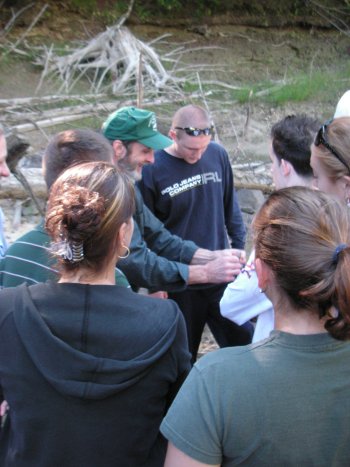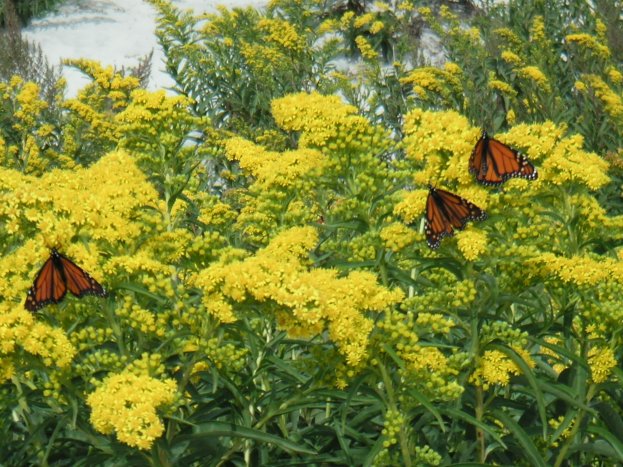New Hampshire Nature Notes
by Eric Orff
Magnificent monarchs mob Hampton Beach State Park
Friday 09/22/2006
What a magnificent mob of monarch butterflies I managed to emerge myself into today. I ended up on the coast with some other Fish and Game staff as well as a Fish and Wildlife Service biologist. We started out in Rye and traveled down the coastal Route 1A to Hampton late morning. We were headed down to site walk Hampton Beach State Park, where we had a couple of successful piping plover nests this summer. Plovers are a small robin sized shore bird that disappeared from the New Hampshire coast in the 1950's due to development of the beach front, which included bring cats on the beach which killed off the birds. Plovers are now Federally protected.
I have been helping in small ways to protect the few pairs that have returned to this state after a 50 year absence. Usually it is the annual plover beach fencing in April of each year since two pairs showed up in Seabrook in 1997. Today we were walking the areas with the Fish and Game "plover monitor" to see why certain nests were successful and some not. Wondering what we could do to improve their lot.
At Rye I was amazed by the numbers of monarch butterflies drifting by. I have been seeing way more this late summer than any year in the past. In my half hour drive along Route 1A I counted 29 live monarchs slowly winging their way toward Mexico right at the sea's edge.
Even though this was more than I had ever seen before, it was nothing compared to the numbers necturing on the goldenrod at Hampton Beach State Park. There were hundreds, maybe thousands, fluttering about the narrow band of goldenrods flowering along the sand dunes at the Park. Much of New Hampshire's sea front has been developed practically to the high tide mark. But here at Hampton Beach a mear thread of wildlife habitat has been protected, and actually has been improved over the last few years with fencing to allow the natural vegetation to grow back. And this narrow skein of habitat was alive with brilliant colored monarchs. It is a sight I'll not soon forget.
To back up a bit, yesterday afternoon I met Dr. Barry Wicklow from St. Anslem Collage in Goffstown, along with a dozen of his students from an aquatic ecology class, for the grand tour of the Suncook River avulsion. Dr. Wicklow has taken the lead in returning the endangered brook floater mussels back into the Suncook River. But he had not yet had a chance to witness the changed Suncook River, so it was an opportunity to help him take his class to the several vantage points where the old channel and new channel could be observed and discussed. Here again it was similar to the time I took the two UNH professors and a few of their students. The professor poked, proded, picked up and posed questions to his students to help them understand what had happened. I enjoy standing back, when I can, to watch the bright eyed students take it all in.
It is late Friday night, just minutes away from the autumnal equinox. Fall is at hand in just a few minutes! Where did summer go? The warm days of late have summer-like feel to them, although the nights have sure cooled down. We are in a daily see-saw from summer to fall it seems. I kind of wonder if this Indian Summer will last into October. Last year sure was a washout. It began the rainy period that didn't end until this past July. Oh how the swamp maples have bolded up the view, even down on the coast. There just seems to me to be more color early this year. I hope it lasts for weeks.
Previous Note
2006-09-16
A warm rain is falling tonight sending swarms of frogs across our roads.


